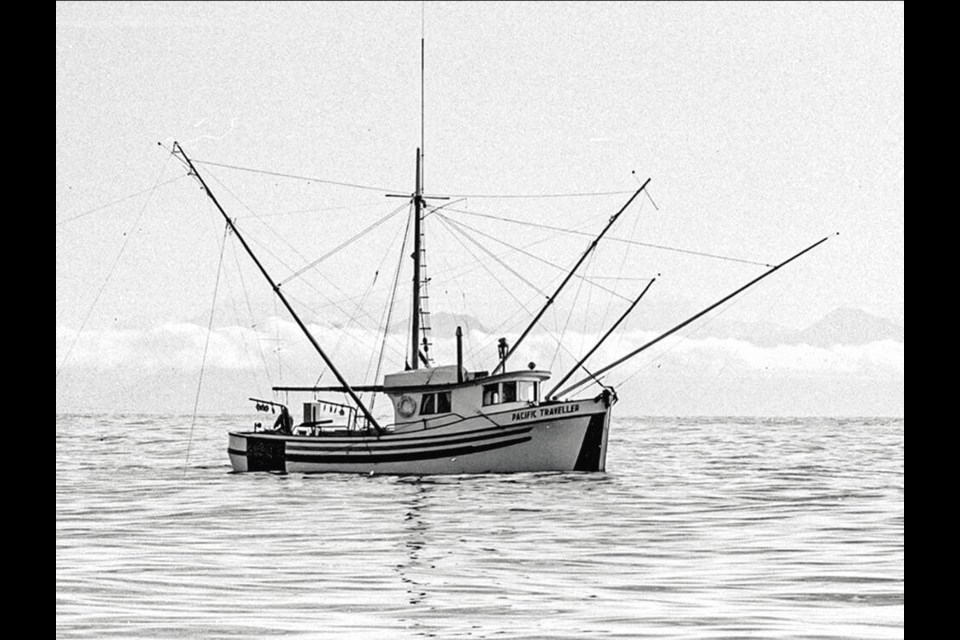Beginning in the early 1850s, and promoted by the Hudson’s Bay Company, the discovery of quality coal drew people to a place that, by 1860, is being called “Nanaimo” (from the Coast Salish Snunéymuxw, meaning “people of many names”). By the 1870s, with a population of about 1,000, Nanaimo is exporting huge tonnages, mainly to the U.S. via steamers.
During Nanaimo’s early growth, pub-hotels with grand names like the Royal (1879), Occidental (1886), Globe (1887), Palace (1889), and Queen’s (1892) were built to house, entertain and fuel (with beer, mainly) the many workers now coming to Nanaimo. Some of these establishments, quite remarkably, continue to serve pints; the Royal was destroyed by fire in 1894.
Many colliers will stay, and the DNA they brought with them (both physical and cultural) still circulates.
Coal, then, can be thanked for putting the “pub” in Nanaimo’s best but somewhat too-often forgotten nickname: “The Hub, Pub, and Tub City,” which was a clever expansion of Nanaimo’s more plunky moniker: the “Hub City.”
Today, Nanaimo calls itself “the Harbour City,” which may be a little plain. Isn’t this also the name for a giant mall in Hong Kong, as well as a few other places, including Sydney, Australia?
As Nanaimo reshaped itself in the early 20th century, and as the demand for coal declined, the forest industry (logging and milling) began to crucially prop up Nanaimo’s base economy. By the early 1950s, with the first steps in building the massive Harmac pulp mill just south of the town, coal production comes to an end.
Then there’s the fish.
A substantial herring industry already existed, mainly processing salted herring (“salteries”) by Japanese-Canadian owners and workers for export to China. Prejudice would sidetrack much of herring industry in the 1920s, and then, once more, during Second World War, when Japanese owners and workers were largely prohibited from catching and processing herring due to interment and the dispossession of their fishing and manufacturing equipment.
Nanaimo, in fact, seems to have had yet another passing nickname: Herring Town.
Salmon fishing and processing on the West Coast boomed in the late 1800s, peaking by the 1930s. Over 200 salmon canneries variously operated in sa国际传媒 Today, there’s just one: St. Jean’s, the terrific small-scale niche cannery in Nanaimo.
After the Second World War, commercial fishing seemed to be on the rise, but as early as the 1950s, when it was the fourth largest industry in sa国际传媒, it became clear that salmon stocks were on the decline, with spawning habitat losses, uncertain salmon runs, water-use issues, increasing contaminant problems, species imbalance, and over-fishing — all this, and partly compromised with unionization hurdles, limited markets. Then there’s an unremarkable hatchery “enhancement program” that dates back to the 1970s.
Growing up north of Nanaimo in the 1950s, I well remember quite a few friends and neighbours whose households fully depended on commercial fishing.
Their stories and lives — sometimes via gossip or hearsay — moved through our own home, and sometimes via the kids I played with.
One of the complex and mysterious stories that lingered from elementary school had to do with the family of a commercial fisherman not too far from where we lived.
I didn’t really understand what it meant until many years later, but word had it that this fisherman may have had a woman “friend” somewhere up north, a First Nations woman. What exactly this meant as it fell upon the ears of an innocent kid certainly sounded above any suspicion.
A “friend.”
And so, based on a little research, and in attempting to craft a novel from my Nanaimo-based youth, a story began to form around those circumstances as a kind of prequel to another novel that springs from a dark moment in Nanaimo’s history — the double murder of a young couple at Piper’s Lagoon in 1962: The Watchers’ Club (2023).
The new novel, The Fisherman’s Secret, follows a frighteningly precocious 12-year-old boy, the son of a commercial salmon fisherman, whose family is beginning to fall apart for reasons the narrator, remembering as a six-year-old who lives across the road, cannot fully understand.
At the same time, an embedded story told by the narrator’s older brother emerges. He, it seems, has come to know a great deal about the relationship between the fisherman and a young First Nations woman up the coast; and so we follow both stories, but particularly the startling falling-apart of the 12-year-old as he heads toward an unthinkable solution to what he has found out about his family — a solution fuelled by what he discovers hidden on his father’s fishing boat.
One thing I’ve learned — well, two things: Kids know more than parents think, and they are always listening and looking, especially when you think they aren’t.
Beyond that, a kind of truism holds for this story, and one not just belonging to Nanaimo at a certain point in its history: that every place, every moment, every person, every family, has secrets, and some are more precarious — and persistent — than others. In this case, it is a fisherman’s secret.
Kim Blank teaches literature at UVic. The Fisherman’s Secret is available online via Barnes & Noble, Amazon, and other outlets and bookstores.



